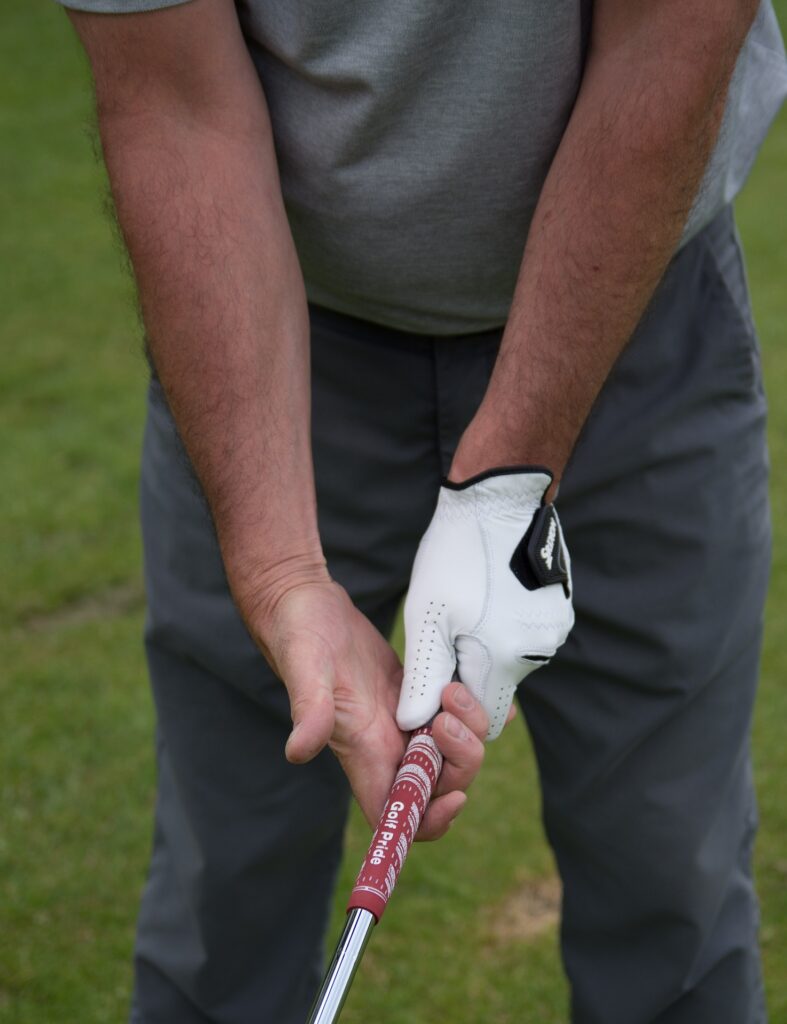Golf Tips to Break 90
In the game of golf, breaking the elusive 90 mark is a milestone every golfer dreams of achieving. It’s a testament to your skill, dedication, and mastery of the game.
In this post, I will be sharing some incredible basic golf tips to break 90 in your game and place a step ahead, which possibly takes your game all through to 100.
What it means to break 90 in golf.
Breaking 90 in golf refers to the achievement of completing a round of 18 holes with a score of 89 or lower. This milestone is often viewed as a significant accomplishment for amateur golfers, as it demonstrates a certain level of skill and consistency in their game.
To break 90, a golfer must average no more than one bogey (one stroke over par) per hole, or a combination of pars, birdies, and bogeys that result in a total score of 89 or less.
Master the Basics.
Mastering the basics of golf is essential for improving your performance and reaching milestones like breaking 90.
These first three steps involve focusing on the fundamental aspects of the game, including grip, stance, and swing mechanics. Here’s a brief overview of these first three key elements:
Grip.

The grip is the foundation of your golf swing, as it affects the control you have over the clubface and the power you generate.
Tips for a Consistent Grip.
Choose the right grip style for you. There are three primary grip styles: the interlocking grip, the overlapping grip, and the ten-finger (or baseball) grip. Experiment with each to determine which feels most comfortable and natural for you.
Position your hands correctly. For a right-handed golfer, the left hand should be at the top of the grip, with the base of the little finger to the middle of the index finger resting on the club. The right hand should be below the left, with the little finger resting on the index finger or middle finger of the left hand (depending on your chosen grip style). Reverse this for left-handed golfers.
Grip pressure matters. Apply just enough pressure to maintain control of the club without causing tension in your arms and wrists. A common phrase in golf is to grip the club like you’re holding a baby bird: firm enough not to let it go, but gentle enough not to hurt it.
Check your grip regularly. Before each shot, take a moment to ensure your grip is correct and consistent. It’s easy for your grip to shift slightly over time, so making this part of your pre-shot routine can help maintain consistency.
Stance.
A proper stance sets the stage for a balanced and powerful swing. To achieve a correct stance:
- Stand with your feet shoulder-width apart to provide a stable base.
- Slightly bend your knees and maintain an athletic posture.
- Distribute your weight evenly between both feet.
- Allow your arms to hang naturally as you address the ball, with your head positioned behind the ball.
Swing Mechanics.
Developing a consistent and efficient swing is crucial for achieving lower scores in golf. Focus on the following aspects to improve your swing mechanics:
- Maintain a smooth tempo throughout your swing, avoiding abrupt or jerky movements.
- Ensure a full shoulder turn during your backswing, rotating around your spine while keeping your head still.
- Initiate the downswing from the ground up, using your legs and hips to generate power before your upper body follows.
- Practice maintaining a steady head position and good balance throughout the entire swing.
Mastering these basic elements of grip, stance, and swing mechanics is usually the first three steps towards improving your overall golf game which will eventually lead to breaking 90.
Course Management.
Course management in golf refers to the strategic approach you take when playing a round, considering various factors like course layout, hazards, and personal strengths and weaknesses. Effective course management can help lower your scores by minimizing risk and capitalizing on opportunities. Here are some key tips for improving your course management skills:
Plan Your Shots.
Before each shot, assess the situation and make a strategic decision based on factors like wind, elevation changes, and hazards. Think about the ideal landing area for your ball and choose the club that will give you the best chance of achieving that result.
Know Your Distances.
Understanding how far you hit each club is crucial for making informed decisions on the course. Track your average distances for each club and use this information when selecting your club for a particular shot.
Play to Your Strengths.
Recognize your strengths and weaknesses and make decisions that play to your strengths. For example, if you struggle with long irons, consider laying up to a comfortable distance for your next shot, rather than attempting a difficult shot with a low probability of success.
Avoid Trouble Areas.
Minimize the risk of high scores by steering clear of trouble spots on the course, such as water hazards, bunkers, and out-of-bounds areas. Lay up short of hazards when necessary, and choose a conservative target line that provides a higher margin for error.
Smart Club Selection.
Select clubs that maximize your chances of success in different situations. For instance, using a hybrid or long iron off the tee on tight fairways can provide more control than a driver. Around the greens, consider using a club with more loft to increase your margin for error and improve your chances of getting up and down.
Be Realistic.
It’s essential to be realistic about your abilities and not attempt shots beyond your skill level. Instead, focus on executing shots that you know you can pull off consistently, even if it means taking a more conservative approach.
Short Game.
The short game in golf refers to shots played from close proximity to the green, including chipping, pitching, and bunker shots.
A strong short game can significantly lower your scores, as it helps you save strokes when you miss greens in regulation. Here are some tips for improving your short game:
Chipping.
- Club selection: Choose the appropriate club based on the amount of green you have to work with and the desired trajectory of your shot. Higher-lofted clubs, like a sand wedge or lob wedge, produce a higher ball flight, while lower-lofted clubs, like a 7-iron or 8-iron, produce a lower trajectory with more roll.
- Setup: Stand with your feet close together, weight shifted toward your lead foot, and the ball positioned in the middle or slightly back in your stance. This setup promotes a downward strike, ensuring crisp contact.
- Swing: Use a simple, pendulum-like motion with minimal wrist hinge to maintain control and consistency.
Pitching.
- Club selection: Use a high-lofted club, such as a sand wedge or lob wedge, to generate more height and spin, allowing the ball to stop quickly on the green.
- Setup: Stand with your feet slightly wider than chipping and the ball positioned in the middle of your stance. Keep your weight centered and maintain a slight shaft lean toward the target.
- Swing: Engage your wrists during the backswing and maintain a smooth, accelerating motion through impact. Focus on making solid contact and controlling the trajectory and distance of your shot.
Bunker Shots.
- Club selection: Choose a high-lofted club with a wide sole and sufficient bounce, such as a sand wedge, to help the club glide through the sand without digging.
- Setup: Open your clubface and stance, positioning the ball forward in your stance. Dig your feet into the sand to create a stable base and encourage a slightly steeper swing path.
- Swing: Make an aggressive, full swing, focusing on striking the sand about 1-2 inches behind the ball. The goal is to splash the sand out of the bunker, carrying the ball with it.
By dedicating time to practicing these short-game techniques and understanding the nuances of chipping, pitching, and bunker play, you’ll be better equipped to save strokes and improve your overall golf performance, helping you achieve milestones like breaking 90.
Mental Game.
The mental game in golf refers to the psychological aspects of the sport, which can significantly impact your performance on the course.
A strong mental game allows you to manage emotions, maintain focus, and make better decisions under pressure. Here are some tips for improving your mental game:
Staying Present.
- Focus on the current shot and avoid dwelling on past mistakes or worrying about future holes. This helps you maintain your concentration and perform at your best.
- Develop a pre-shot routine that helps you stay present and mentally prepare for each shot.
Visualization.
- Before executing a shot, visualize the ball’s trajectory and the desired outcome. This mental rehearsal can boost your confidence and increase the likelihood of a successful shot.
- Use positive imagery and self-talk to reinforce good habits and stay in a confident mindset.
Embrace Mistakes.
- Accept that mistakes are inevitable in golf and use them as opportunities for growth.
- Learn from your errors and avoid getting frustrated, as this can negatively affect your performance.
Manage Expectations.
- Set realistic goals and expectations for your performance on the course. This helps reduce the pressure to perform perfectly and allows you to focus on playing your best.
- Celebrate small successes and progress, acknowledging your improvement over time.
Develop a Strong Pre-Shot Routine.
- Create a consistent pre-shot routine that helps you stay focused and mentally prepare for each shot.
- Incorporate elements such as alignment, deep breathing, and visualization into your routine.
Breathing Techniques
- Use deep, controlled breathing to help calm your nerves and maintain focus under pressure.
- Practice inhaling slowly for a count of four, holding for a count of four, and exhaling for a count of four to promote relaxation and focus.
Positive Self-Talk.
- Replace negative thoughts with positive affirmations and self-encouragement.
- Remind yourself of past successes and focus on what you can control, rather than external factors.
By implementing these mental game strategies, you’ll be better equipped to handle the psychological challenges of golf, allowing you to perform at your best and work towards milestones like breaking 90.
Practice Routine
A well-structured practice routine is essential for improving your golf game and working towards milestones like breaking 90. A good practice routine should cover all aspects of the game, including full swing, short game, and putting. Here are some tips for creating an effective practice routine:
Warm-Up.
- Begin your practice session with a proper warm-up to loosen up your muscles and prevent injuries. Incorporate dynamic stretches and light aerobic exercises, like jogging or jumping jacks, to increase your heart rate and blood flow.
Full Swing.
- Start by practicing with shorter clubs, like wedges or short irons, and gradually progress to longer clubs, like woods and drivers.
- Focus on specific aspects of your swing, such as grip, stance, and swing mechanics. Use drills and training aids to reinforce proper technique and muscle memory.
- Dedicate time to practicing shots that you commonly encounter on the course, such as fades, draws, and punch shots.
Short Game.
- Allocate a significant portion of your practice time to the short game, as it plays a crucial role in scoring.
- Practice various types of shots, including chips, pitches, and bunker shots, from different lies and distances to simulate on-course scenarios.
- Work on your distance control and trajectory by aiming at specific targets and landing zones.
Putting.
- Spend time practicing putts of varying lengths, focusing on both distance control and accuracy.
- Use drills to improve your putting stroke and consistency, such as the gate drill, ladder drill, or clock drill.
- Practice reading greens and visualizing the break of your putts to develop your green-reading skills.
On-Course Practice.
- Schedule regular on-course practice sessions to apply what you’ve learned on the range and test your skills in real situations.
- Play practice rounds with specific goals and objectives, such as focusing on course management or experimenting with new shots and strategies.
- Engage in competitive practice, like playing matches or participating in local tournaments, to simulate the pressure of tournament play and build mental resilience.
Rest and Recovery.
- Allocate time for rest and recovery to avoid overtraining and burnout.
- Schedule regular breaks in your practice routine, and consider incorporating activities like yoga or meditation to promote relaxation and mental well-being.
By following these guidelines and dedicating time to each aspect of the game, you’ll create a well-rounded practice routine that promotes steady improvement and helps you work towards breaking 90 in golf.
Additional Tips and Strategies.
Club Fitting.
Playing with clubs that are properly fitted to your swing and body type can make a significant difference in your performance.
You want to Consult with a club-fitting specialist to ensure your clubs are optimized for your swing characteristics and physical dimensions if you are not able to do that by yourself.
Track Your Stats.
Next is, you want to properly Keep track of your statistics, such as fairways hit, greens in regulation, putts per round, and up-and-down percentage.
Analyzing these stats can help you identify areas for improvement and gauge your progress over time.
Develop a Pre-Shot Routine.
Another equally important tip is by establishing a consistent pre-shot routine as this can help you maintain focus and feel more comfortable over the ball. Incorporate elements like alignment, visualization, and deep breathing to ensure you are physically and mentally prepared for each shot.
Fitness and Nutrition.
Another crucial tip you shouldn’t dare overlook is your Physical fitness as this plays a crucial role in golf performance.
Incorporate strength, flexibility, and cardiovascular exercises into your routine to improve your overall physical condition.
Additionally, maintain a balanced diet and stay hydrated to ensure your body has the nutrients and energy it needs for optimal performance on the course.
Learn from Better Players.
Playing with golfers who are more skilled than you can provide valuable insights and motivation. Observe their course management, swing mechanics, and mental approach to learn new techniques and strategies that can help you improve your game.
Conclusion.
Breaking 90 is an attainable goal with dedication, practice, and the right mindset. First, you start By focusing on mastering the basics, improving your course management, sharpening your short game, and strengthening your mental game.
Next, you want to Implement additional strategies, such as club fitting, tracking your stats, and learning from better players, to further enhance your progress. Remember to be patient and enjoy the process, as improvement takes time and perseverance.






